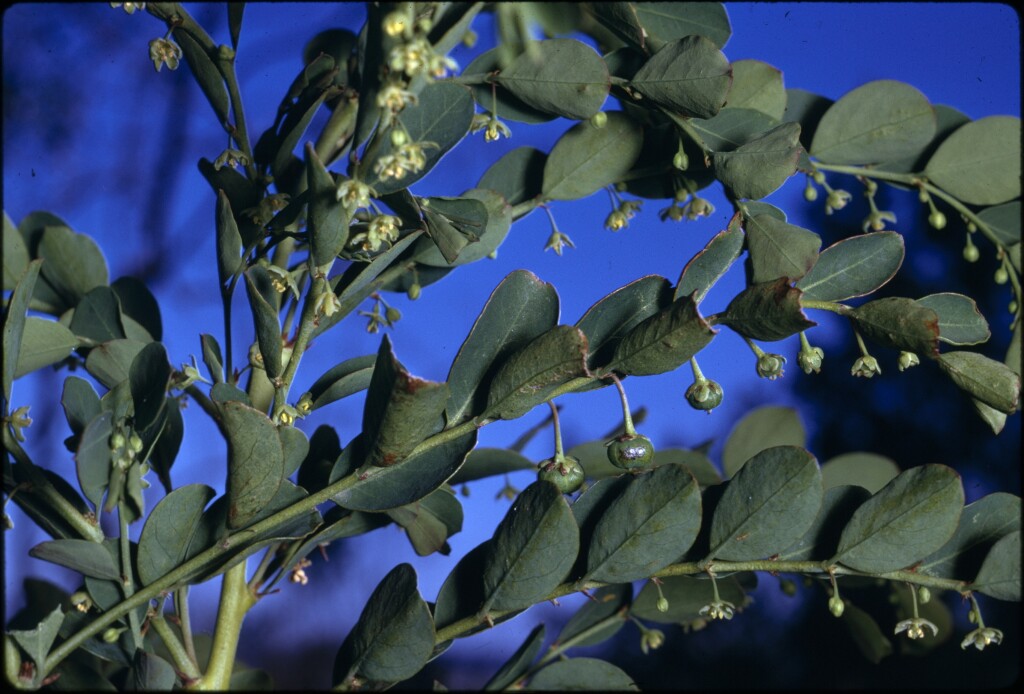Phyllanthus gunnii
Hook.f. Shrubby SpurgeMonoecious or rarely dioecious shrub to 2.5 m high; branchlets smooth and glabrous. Leaves orbicular, elliptic, obovate or oblanceolate, 9–33 mm long, 4–20 mm wide, usually rounded, flat, paler below; secondary veins 4–10 per side; petioles 0.7–3 mm long; stipules c. ovate, 0.7–4.6 mm long, red-brown, often flecked paler. Male flowers 1–21 per axil; pedicels 2–6 mm long; sepals 0.9–2.4 mm long, white, yellow or greenish, often with a lobe on one or both sides; disc 0.6–1.7 mm wide; stamen filaments free or connate, 0.3–1 mm long. Female flowers 1–4 per axil; pedicels 2.3–7 mm long; sepals 1–2.2 mm long, white, yellowish or green, often with a lobe on one or both sides; disc 0.6–1.3 mm wide; styles 3, undivided, 0.4–1.5 mm long. Capsule transversely ellipsoid, apically depressed, 2–2.8 mm long, 3.6–4.5 mm wide; seeds yellow-brown, pallid-brown, or black, 1.6–2.3 mm long, rugose and ribbed. Flowers all year.
Wim, GipP, OtP, GGr, EGL, EGU, WPro, HSF, OtR, Strz, MonT, HFE. Also Qld, NSW, Tas. Grows mainly in sheltered gullies along creek and river banks, often near the coast. Sometimes forming thickets after fire or soil disturbance. An 1853 collection purportedly from Mt Arapiles is probably not accurate given the difference in environment there to all the confirmed current places of occurrence nearer to the coast.
This species contains cyanic compounds and is reported to cause death in cattle.
Hunter, J.T.; Bruhl, J.J. (1999). Phyllanthus. In: Walsh, N.G.; Entwisle, T.J., Flora of Victoria Vol. 4, Cornaceae to Asteraceae, pp. 74–78. Inkata Press, Melbourne.
 Spinning
Spinning
